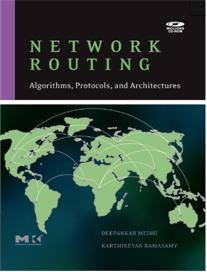| |
|
|
Foreword
by
Larry Landweber
Past John P. Morgridge Chair and Past Department Chairman
Computer Science Department, University of Wisconsin–Madison
Fellow, Association for Computing Machinery
Recipient of IEEE Award on International Communication
Former President and Chair of the Board of Trustees, Internet Society
My involvement with computer networking started with TheoryNet (1977), an e-mail system
for theoretical computer scientists. Later (1981) I helped lead the computer science network
(CSNET) project, which eventually connected most academic and many industrial computer
research groups. In the early days, our efforts were primarily focused on providing connectivity
and being able to use applications such as e-mail, ftp, and telnet. However, even in the
simple (by today’s standards) environment of the 1970s and early 1980s (Arpanet, CSNET,
and other experimental Internet networks), getting routing “right” turned out to be quite
challenging.
I was fortunate to be part of the NSFNET regional/backbone model development. This
is when I began to fully understand the significance of routing in a large-scale multi-domain
network and, in particular, the central role of policy issues in such a decentralized environment.
Over the past decade, as the Internet became ubiquitous and global in scale, routing
has become ever more important. Packets must be forwarded efficiently from one end of the
world to the other with minimal perception of delay. This has required tremendous efforts
on many fronts: how to evolve routing protocols for large-scale loosely-coupled networking
environments, how to engineer a network for efficient routing from an operational point of
view, how to do efficient packet processing at routers, and how to effectively take into account
the complexity of policy issues in the determination of routes. And while there have
been many exciting advances over the past two decades, much work remains to be done.
In parallel, we have seen tremendous advances in traditional telephony. The underlying
telecommunication system has changed from analog to digital and has incorporated the
latest advances in optical technologies and, more recently, voice over IP. Throughout these
revolutionary changes, routing has continued to play a critical role.
We are now at a crossroad. Various efforts are underway to determine a framework for
next generation networks that allow seamless convergence of services and a platform tomore
easily create new services. Among other things, this requires a fresh look at routing. To be
successful, it is important that we understand what has worked to date. To better understand
the issues and complexities, we should look at this broadly, considering a variety of different
network architectures, not just for the Internet. For each such network architecture, we can
benefit from understanding its principles, protocols, algorithms, and functions, with a focus
on routing. This will help give us perspective as we consider how to design routing for the
next-generation network.
In this regard, Deepankar Medhi and Karthikeyan Ramasamy’s book, Network Routing:
Algorithms, Protocols, and Architectures, is very timely. Departing from most other works, it
is unique in providing an in-depth understanding of routing in a wide variety of types of
networks. It includes extensive coverage of the evolution of routing over time. Particularly
appealing is its in-depth coverage across a spectrum of algorithmic, technical, experiential,
and practical issues. In addition, the detailed coverage of routers and switches is particularly
valuable, as it helps the reader gain an understanding of why different approaches and components
are needed to address packet processing, especially for scalability. In this regard, it is
uniquely successful in drawing an important connection between routing and routers.
Medhi and Ramasamy’s presentation is clear and approachable, allowing a wide audience
to understand and gain an appreciation of network routing. I believe that it will become
a core reference book on routing for router developers, network providers, students, and
researchers for both today’s practitioners and those who are interested in next-generation
routing.
|

